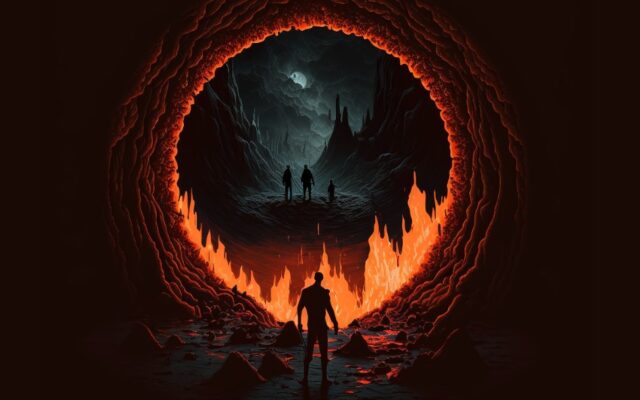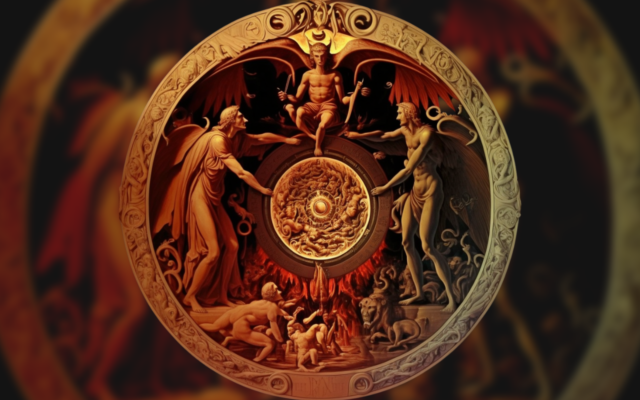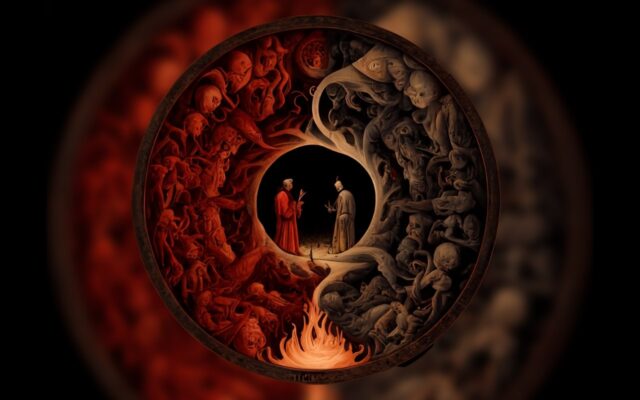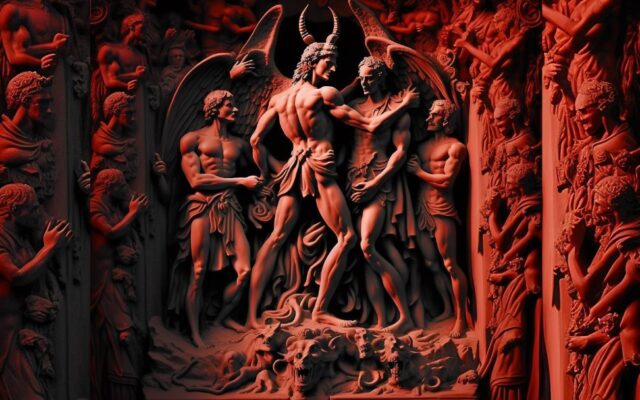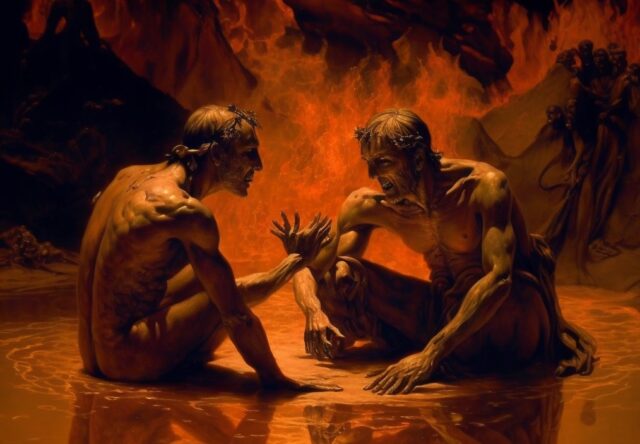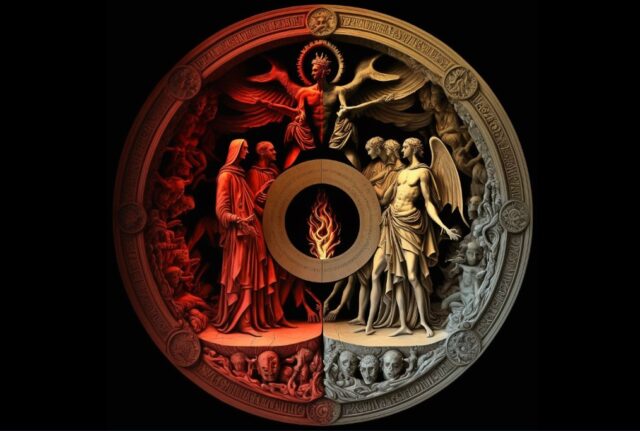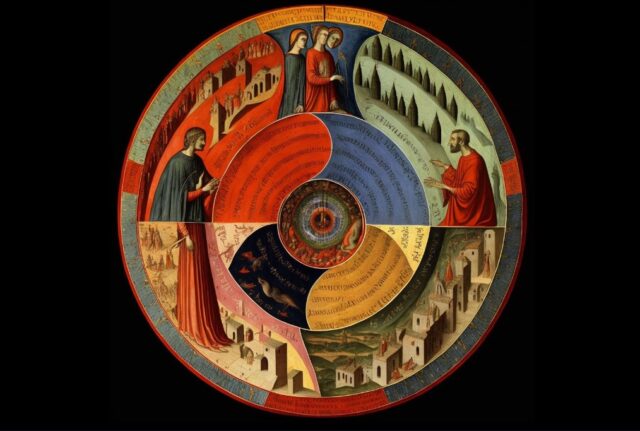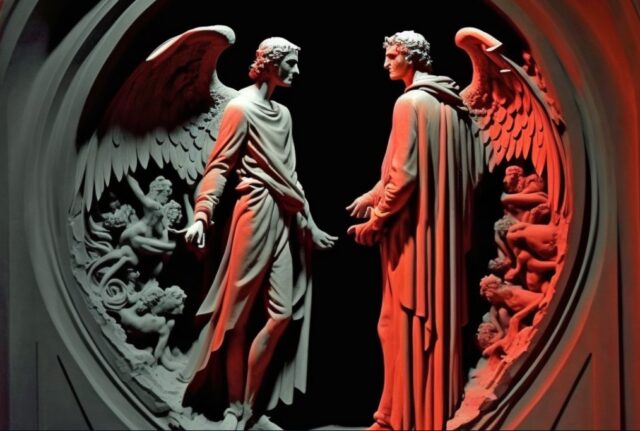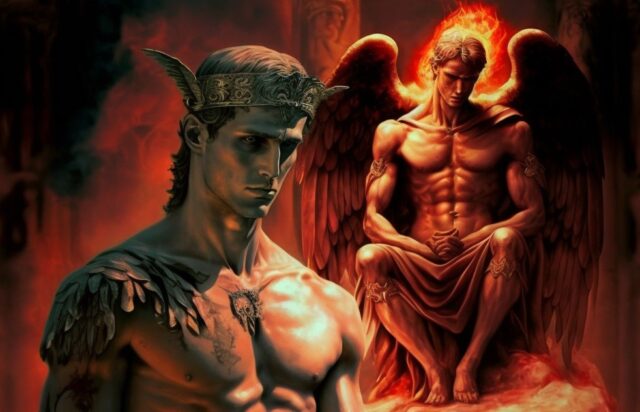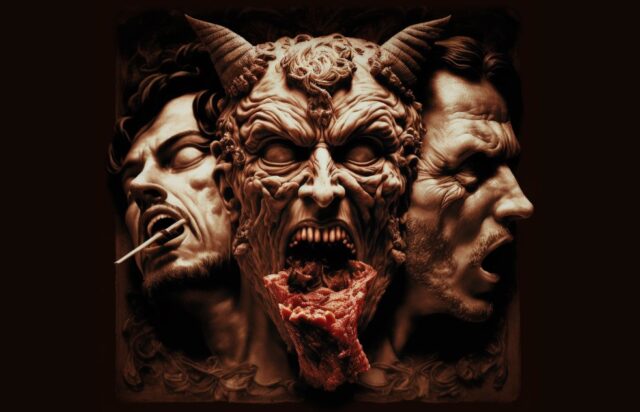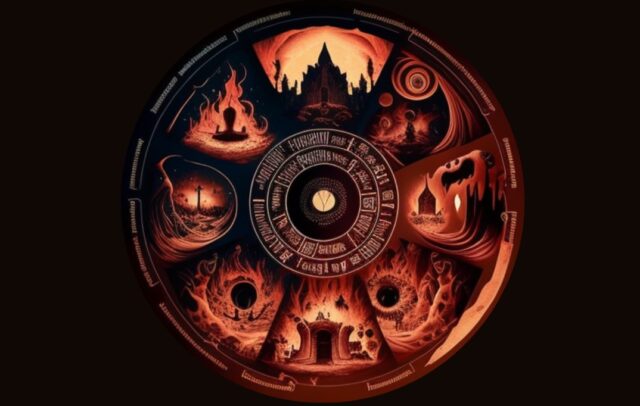
Dante Alighieri’s The Divine Comedy is one of the most influential works of literature in modern times. Written in the early 14th century, it follows Dante’s journey to the underworld and back, accompanied by his guide, Virgil. The nine circles of Hell described in the poem are considered to be one of the most detailed and vivid portrayals of damnation ever written.
In this blog post, we will take a look at each circle of Hell and examine how they were used to depict punishment for sin. We will also discuss how these circles have been interpreted over time and what they mean to us today. So strap in – it’s time to explore Dante’s inferno!
The First Circle: Limbo
The first circle of Hell is limbo, where the virtuous pagans and unbaptized reside. This circle is described as a place where there is no punishment but rather a simple lack of God’s presence. Dante speaks to a number of figures from classical antiquity in this circle, including Homer, Horace, Ovid, and Lucan. He also meets his friend and mentor Virgil here, who serves as his guide through the Inferno.
Although this circle is not Heaven, as far as Hell goes, it is not quite as bad as other circles. It is a type of retirement community of the afterlife. You can see Hippocrates and Aristotle here, so there is plenty of conversation opportunities.
The Second Circle: Lust
In the second circle of Hell, Dante and Virgil find those who are consumed by lust. These souls are blown about by a fierce storm, indicative of the unrestrained passion that controlled their earthly lives. The sinners in this circle are torn apart by their own desire, an appropriate punishment for those who allowed themselves to be slaves to pleasure.
While on Earth, these individuals gave into their baser instincts, succumbing to temptation and indulging in physical pleasures without restraint. As a result, they lost sight of what was truly important in life and allowed themselves to be controlled by their passions. In the second circle of Hell, they are constantly buffeted by a violent storm, symbolic of the turmoil that defined their lives.
This is a fitting punishment for those who allowed themselves to be ruled by lust. They wasted their time on Earth pursuing fleeting pleasures instead of focusing on more meaningful pursuits. Now they will spend eternity in a state of unrest, tortured by their own desires.
It is the final destination for lustful and adulterous, essentially everyone that cannot control their hormones. During Dante’s day, you could find Cleopatra and Helen of Troy among this circle’s famous residents.
The Third Circle: Gluttony
Gluttony, the third circle of hell, is reserved for those who overindulge in earthly pleasures. This includes not just those who ate too much but also those who wasted food or engaged in other excesses. The punishment for gluttony is to be forever stuck in a stinking pit of filth, with vultures and other carrion birds picking at their flesh.
So, if you want to avoid this fate, make sure to moderate your consumption of food and drink and be mindful of wasting anything. And whatever you do, don’t overeat at the next office potluck!
Dante also encounters ordinary people here, but not characters from epic poems or gods from mythology. However, monstrous dog beasts with three heads also reside in this circle. However, Virgil obtained safe passage past the monster by filling its three mouths with mud.
The Fourth Circle: Greed
The Fourth Circle of Hell, Greed, is reserved for those who hoarded wealth during their lifetime and neglected to share it with others. These souls are forced to push giant boulders up a never-ending hill. Their punishment mirrors their sin, as they are eternally burdened by their greed.
Dante encounters more ordinary people here, and the guardian of the circle, Pluto, is the mythological king of the Underworld. This is the first circle in which Dante and Virgil do not interact with any of the inhabitants, which is a commentary on Dante’s opinion of greed as a higher sin.
The Fifth Circle: Anger
The fifth circle of Hell is reserved for the angering. The angriest are forced to lie in a burning lake of fire and brimstone, forever frustrated by their inability to lash out at those who have wronged them. This is the punishment for those who stew in their own anger, unable to let go and move on.
It is an interesting circle where Dante and Virgil are threatened by the Furies when they try to walk through the walls of Dis (Satan). All of this helped Dante’s evaluation of the nature of sin and also got him questioning himself and his own life, as he realized his actions and nature could lead him to torture in this circle forever.
The Sixth Circle: Heresy
The Sixth Circle of Hell is reserved for those who have committed the sin of heresy. Heretics are those who have denied the existence of God or the divine nature of Christ. They are condemned to eternal damnation in a burning tomb, where they will suffer unceasingly from the flames that lick at their flesh.
In this circle, Dante encounters Farinata Degli Uberti, a military leader, and aristocrat who tried to win the Italian throne and was posthumously convicted of heresy.
The Seventh Circle: Violence
The Seventh Circle of Hell is reserved for those who have committed violence. This includes murderers, tyrants, and all those who engage in wanton brutality. The punishment for those in the Seventh Circle is to be forever torn apart by wild beasts. This reflects the notion that violence begets more violence and that those who engage in it are doomed to a life of suffering.
This is the first circle that is segmented into sub-circles – outer, middle, and inner. The outer circle is reserved for those who were violent against people and property, such as Atila the Hun.
The middle circle houses those who commit violence against themselves (suicide), and these sinners are perpetually eaten by Harpies. The inner circle is made up of blasphemers and those who are violent against God and nature.
The Eighth Circle: Fraud
The Eighth Circle of Hell is reserved for those who have committed fraud. This includes all types of deception, from lying and cheating, to con artists and embezzlers.
Fraud is a serious offense, and those condemned to the Eighth Circle are forced to endure eternity surrounded by other liars and deceivers. It is a fitting punishment for those who have spent their lives betraying others.
The Ninth Circle: Treachery
Treachery is the deepest circle of Hell, and it is a place where Satan resides. This is a circle that is further divided into four rounds.
The first is Caina, named after the biblical Cain, who murdered his own brother. This is the round that is reserved for traitors to family.
The second round is named Antenora, from Antenor of Troy, who betrayed the Greeks, and it is a round reserved for political and national traitors.
The third round is Ptolomaea for Ptolomy, son of Abubus, who is known for inviting Simon Maccabaeus and his sons to dinner and then murdering them. It is a round that is reserved for hosts who betray their guests.
The fourth and final round is Judecca, after Judas, who betrayed Christ. It is a round reserved for traitors to their lords, benefactors, and masters.
Center of Hell
After they made their way through the nine circles of hell, Dante and Virgil reached the center of Hell. This is where they meet Satan, who is described in the book as a three-headed beast.
Each of Satan’s mouths is busy eating a specific person. The left mouth is eating Brutus; the right is eating Cassius, while the center mouth is eating Judas. They are ultimate sinners, in Dante’s opinion.
Is there a 10th circle of Hell?
The tenth circle of Hell is a debated topic. Some say that there is a tenth circle, while others claim that there are only nine. The ninth circle is often referred to as the “circle of betrayal,” as it is where those who have betrayed their loved ones reside. It is possible that the tenth circle could be an extension of the ninth, or it could be a separate level entirely.
What do the nine circles of hell represent?
The nine circles of hell represent the different levels of suffering that sinners experience in the afterlife. Each circle is reserved for a specific type of sin, and the punishments become more severe as one moves down the circles.
What is the deepest circle of Hell?
The ninth and final circle of Hell is reserved for those who have committed the most heinous of sins: treachery. Here, traitors are frozen in a lake of ice known as Cocytus. The three main traitors from classical mythology-Judas Iscariot, Brutus, and Cassius-are each located in a different sub-circle of Cocytus, suffering for their crimes against God, man, and country, respectively.
While the punishment for each sinner is unique, the one unifying factor is the utter isolation each experience. Traitors are cast out from society and condemned to spend eternity alone, cut off from the love and companionship of others. It is a fitting end for those who have betrayed the trust of those closest to them.
Final Words
The Divine Comedy is a masterpiece that everyone who did not have the opportunity to read so far should give a chance. It is a complex work of art, and it takes the reader on a journey full of interesting life lessons and stories about punishment and consequences.
Dante Alighieri reveals heaven as harmony, a unit of man and cosmos, and the love that moves everything, while Hell is described thoroughly, artistically, and in detail. Give this book a chance, and we guarantee you will not regret it.

